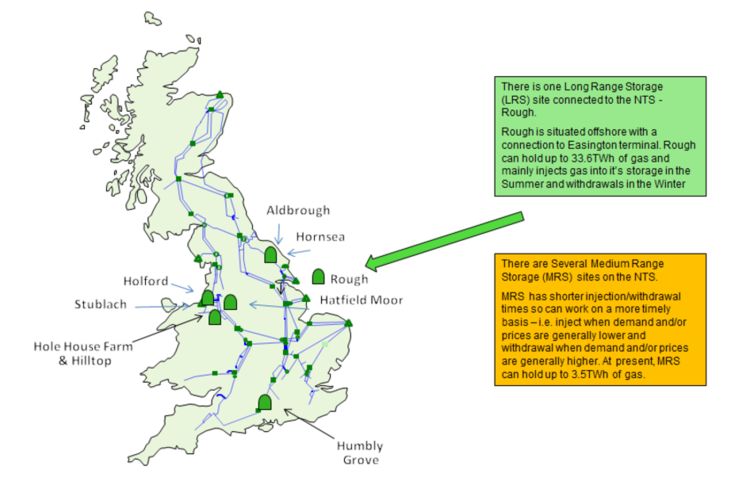
For the first time in more than three decades, natural gas traders, utilities and producers are preparing for a winter without the UK’s biggest storage facility.
With Centrica Plc’s North Sea Rough storage site almost empty after wells deteriorated, the UK is set to lose a quarter of its daily supply capacity during the winter as well as its ability to quickly respond to short-term swings in demand.
Britain will import more fuel, which may be costly and create opportunities for traders and producers, as well as boost business for smaller storage sites.
The shutdown of Rough, a depleted North Sea field run as a storage site since 1985, will impact the UK economy through more volatile energy prices during the peak winter season and increase the reliance on imports via liquefied natural gas tankers that can take weeks to arrive.
The halt also offers Russia an opportunity to strengthen its grip on deliveries to Europe, which faces declining local production and extraction caps at the region’s biggest field at Groningen in the Netherlands.
Didier Magne, head of European gas at commodity trader TrailStone U.K. Ltd, said: “It definitely generates more risk in the winter and increases a bit dependence of Europe on LNG.
“We know that Rough is highly unlikely to return, we know that Groningen is going to reduce production by a further 10 percent.”
Without Rough, more price volatility will benefit trading, David Isenegger, Centrica’s head of mergers and acquisitions, told an Amsterdam conference last week. Volatility jumped last year already amid a partial outage at Rough, which accounts for 70 percent of the U.K.’s total storage.
In the past, a fully operational Rough provided a buffer against price swings.
Flows from the site during winter “meant that you would have to lift demand so much more before you saw the real spikiness” in wholesale rates, Tor Martin Anfinnsen, senior vice president at Norway’s Statoil ASA, said in an interview.
He added: “With that gone, the spikiness in prices might begin at a lower demand level”.
With plenty of alternative supply, weather will be a determining factor. Four straight warm winters in Europe shaved almost 55 billion cubic meters (1.9 trillion cubic feet) of demand since 2013, said Teddy Kott, head of energy market analysis at EDF Trading Ltd. That’s about 12 percent of Europe’s total last year.
No Wave
While additions of LNG capacity globally haven’t yet seen a wave reach Europe, expectations are that extra supply is on its way. Gas for winter delivery to the UK has slid 12% this year, but demand in other markets could pull some of the LNG away from Europe.
Andree Stracke, chief commercial officer at RWE Supply & Trading, said: “The market is very relaxed, we have seen that with prices, because LNG is expected to come.
“In a situation where LNG is not available, then the market will be much tighter.”
Pipeline gas suppliers are also ready to help plug the gap. Russia shipped record volumes to Europe last year and aims to send even more this year. Norway, Europe’s second-biggest supplier, has excess pipeline capacity and can divert gas from the mainland to the UK, Anfinnsen added.
While Centrica’s storage arm posted a £57million loss last year, Isenegger said the suspension of Rough is “probably a good opportunity” for other operators focusing on short-term price swings.
It may not only be UK facilities that benefit from the absence of Rough.
Gas flows to the continent are at their highest level for this time of year since 2012, indicating that U.K. traders may be using continental caverns instead to hold gas they will send back to Britain in the winter.
Magne said: “We have some storage capacity and we luckily benefited from what happened to Rough.
“There is too much storage in Europe, in every country you have far more storage than needed. The only country in Europe that is different is the U.K., where you should have storage.”
Recommended for you
